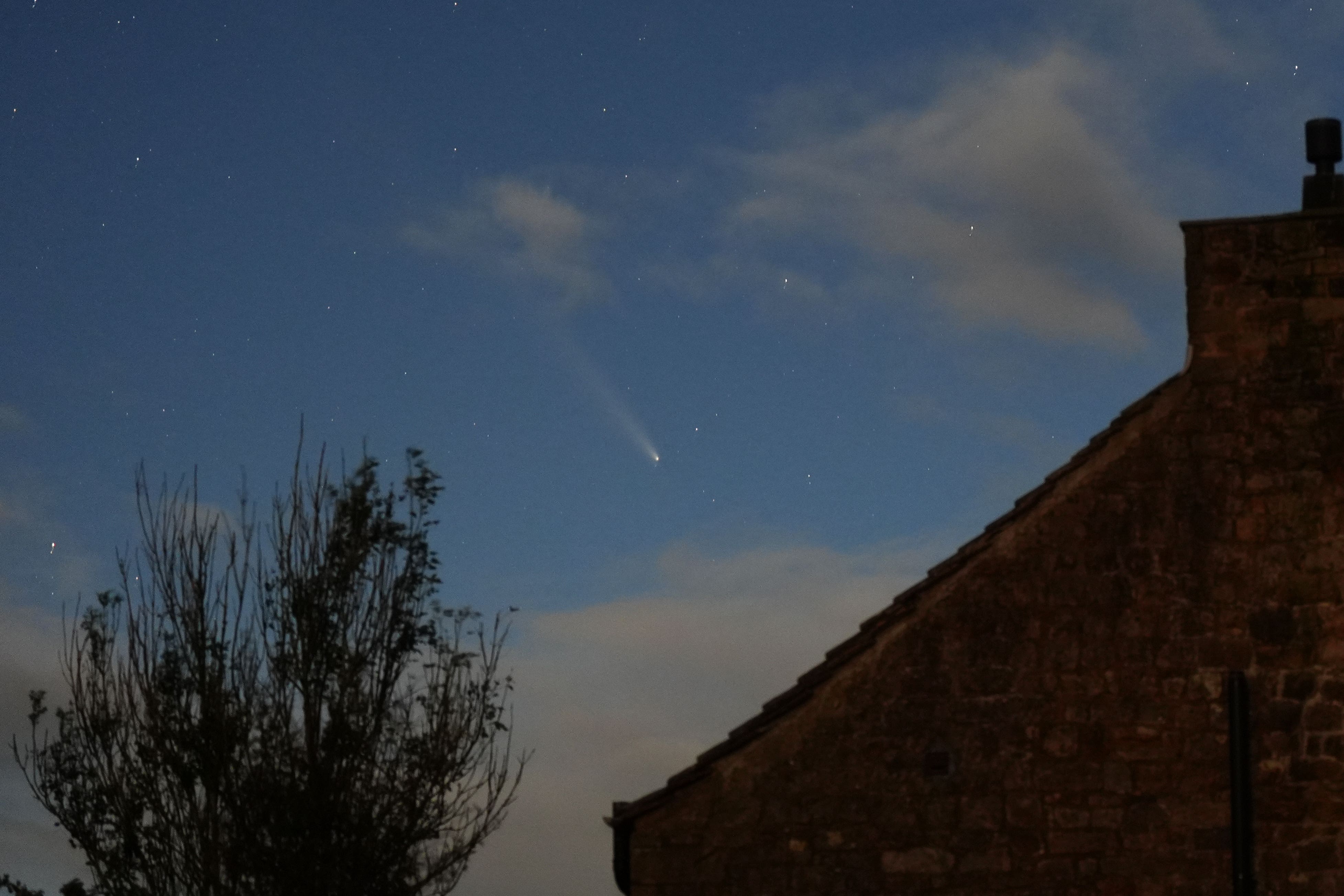Comet last seen 80,000 years ago still visible in UK skies
C/2023 A3 (Tsuchinshan–ATLAS) comet was seen passing through the dark skies in Northumberland.

Your support helps us to tell the story
This election is still a dead heat, according to most polls. In a fight with such wafer-thin margins, we need reporters on the ground talking to the people Trump and Harris are courting. Your support allows us to keep sending journalists to the story.
The Independent is trusted by 27 million Americans from across the entire political spectrum every month. Unlike many other quality news outlets, we choose not to lock you out of our reporting and analysis with paywalls. But quality journalism must still be paid for.
Help us keep bring these critical stories to light. Your support makes all the difference.
A comet last seen for Earth some 80,000 years ago has been spotted in North-East England.
The C/2023 A3 (Tsuchinshan–ATLAS) comet passed through the dark skies in Northumberland, putting on a show for skygazers armed with telescopes at the Northumberland International Dark Sky Park.
Although discovered in January last year, astronomers said it would last have been visible when Neanderthals were alive.
Comets are made of dust, ice and small rocky particles and are often described as “dirty snowballs”.
They orbit the sun in much the same way as planets but follow a more elliptical path.
As they get close to the sun, the comets begin to warm, causing the more volatile materials such as the gases and ices trapped in the comet to escape from the inside through cracks in the crust.
Astronomers say this can make it hard to foresee the path that a comet will take while passing through the solar system.
Dr Megan Argo, an astrophysicist at the University of Central Lancashire, said: “Comets are notoriously difficult to accurately predict in advance.”
She said these celestial objects can develop “tails” when their nuclei – the rocky and icy core – break apart.
This tail of gas and dust can become “bright enough to easily see with the unaided eye, possibly even during daylight if you know where to look”, she added.
The comet was first seen on September 29 in some countries in the Southern Hemisphere, but came back into view last week, appearing “brighter” in the night skies.
Dr Argo said: “It is important to note here that since comets are fuzzy blobs on the sky, rather than having the point-like appearance of stars, this brightness will be more spread out on the sky.”
For those who missed the Tsuchinshan-ATLAS, astronomers say it may still be visible using binoculars for the next few weeks but after that, a telescope may be required.